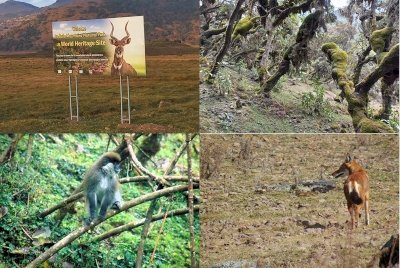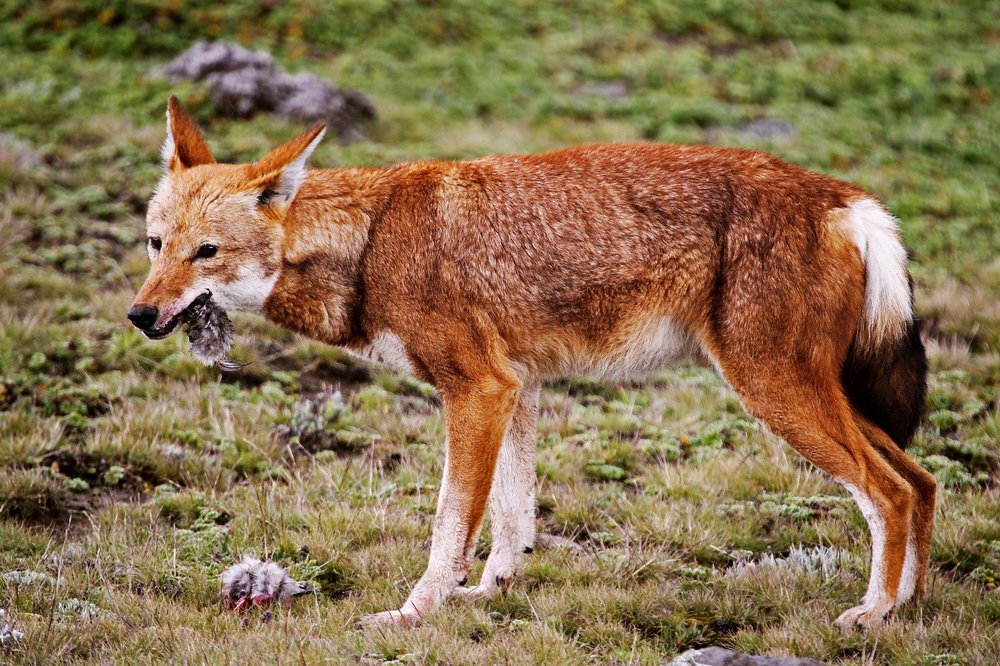Ethiopia
Bale Mountains National Park
Bale Mountains National Park covers a variety of landscapes, most notably Africa’s largest area of afro-alpine habitat above 3,000m with glacial lakes and volcanic peaks.
The park has several distinct and unique habitats, such as the Northern Grasslands (Gaysay Valley), Northern Woodlands (Park Headquarters), Afro-alpine Meadows (Sanetti Plateau), Erica Moorlands, and the Harenna Forest (a moist tropical rainforest). It holds endemic mammals such as Mountain Nyala and Bale Monkey, and has the most important remaining population of Ethiopian Wolf. The area serves also as a genetic reservoir for Wild Forest Coffee.
Community Perspective: Wojciech enjoyed the diversity of the landscapes on offer and recommends spending a day or two.
Site Info
Official Information
- Full Name
- Bale Mountains National Park (ID: 111)
- Country
- Ethiopia
- Status
-
Inscribed 2023
Site history
History of Bale Mountains National Park
- 2023: Inscribed
- Inscribed
- 2021: Postponed
- Due to >1 nomination proposed by State Part in same year
- 2018: Upstream Process
- 1981: Deferred
- At Bureau - Not yet legally defined/protected
- 1980: Deferred
- 1979: Deferred
- Bureau - more thorough evaluation required
- WHS Type
- Natural
- Criteria
- vii
- x
Links
- UNESCO
- whc.unesco.org
All Links
UNESCO.org
- whc.unesco.org — whc.unesco.org/
Related Resources
- balemountains.org — Bale Mountains National Park
News Article
- Oct. 31, 2023 news.mongabay.com — World Heritage Site listing for Ethiopian park leads to eviction of farming community
Community Information
- Community Category
- Natural landscape: Mountain
Travel Information
Recent Connections
View all (14) .Connections of Bale Mountains National Park
- Ecology
- World Heritage Process
- Human Activity
- WHS on Other Lists
- Visiting conditions
News
- news.mongabay.com 10/31/2023
- World Heritage Site listing for Et…
Community Reviews
Show full reviews
Site visited in January 2024.
It took almost 45 years to finally inscribe this place on the list and I am wondering why. After my visit I think the site definitely has OUV. Anyway, the park administration is so happy with the inscription that already 4 months later there are new billboards advertising Bale as a world heritage site. There is no commemorative plaque or UNESCO logo, or at least I couldn’t find it.
The park is in many respects unique and important for three countries - rivers starting here supply water to Ethiopia, Kenya and Somalia. And they have something to power them with, because the rainy season here lasts 9 months.
The park is known for its biodiversity - from mixed forests through forests with the spectacularly blooming Hagenia abyssynica species to heathlands and a completely barren landscape in the highest parts. And in the southern part - Harren's Forest - truly tropical vegetation reigns. The fauna is no less rich, only a small part of which we were able to see, and even less of which we were able to photograph.
The symbol of the park is the mountain nyala, a huge antelope that lives in the northern part of the park. It can be seen entering the park through its headquarters in Jinsho, just off the main road from Shashamane to Bale Robe. We visited the reserve in the late afternoon and I do not recommend this solution - we saw a …
Keep reading 0 comments
